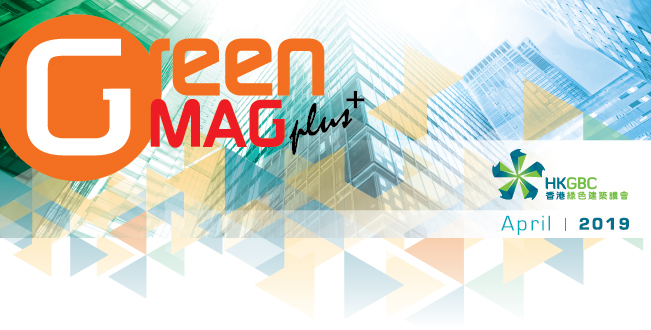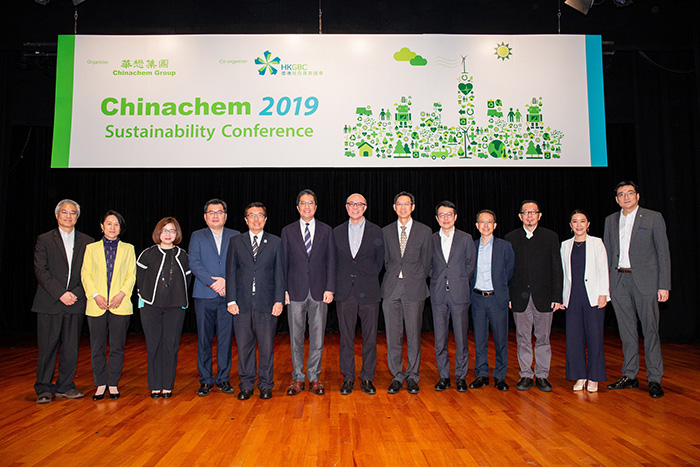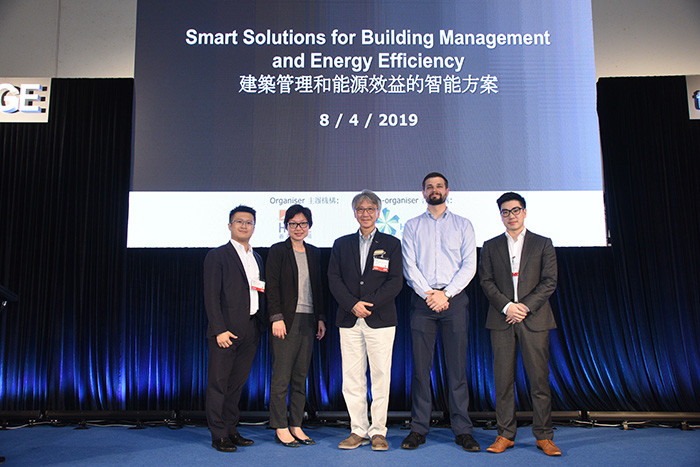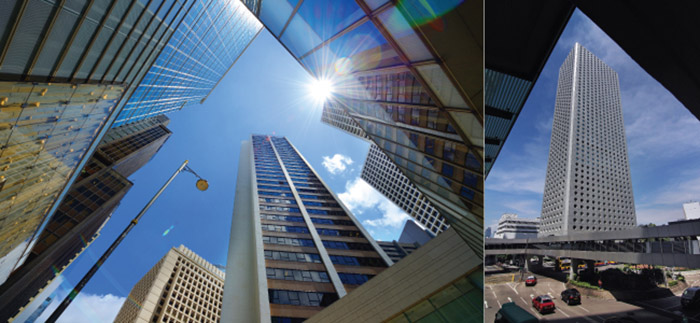

Chinachem Sustainability Conference 2019
Smart Solutions for Building Management and Energy Efficiency Seminar
Green in the Heart of Hong Kong

Chinachem Sustainability Conference 2019

Guest of Honour Mr Michael WONG, Secretary for Development, Development Bureau, Government of HKSAR (6th from Left), and Conference hosts, Mr Donald CHOI, Executive Director and Chief Executive Officer of Chinachem Group (7th from Left); Mr WONG Hung-han, Chief Operating Officer of Chinachem Group (6th from Right) and Mr CHEUNG Hau-wai, Chairman of HKGBC (5th from Left), together with speakers and moderators celebrating for the success of the Conference.
Chinachem Sustainability Conference 2019, co-organised by the Council and Chinachem Group, was successfully held on 29 March 2019 with the theme “Sustainable Neighbourhood: How to Foster age-Friendly Developments”. The Conference attracted 380 attendees in morning and afternoon sessions.
We are honoured to have invited Mr Michael WONG, Secretary for Development, Government of HKSAR as our Guest of Honour to make a keynote on the housing policies and land development projects that the Government is now working on in view of its urban renewal strategy to the entire city and growing population.; after the welcome speech by Mr Donald CHOI, Executive Director and Chief Executive Officer of Chinachem Group.
In the morning session, Ms Amy CHEUNG, Assistant Director/Territorial of Planning Department shared from planning perspective in building an age-friendly environment strategically. Followed by Dr Vivian LOU, Member of The Elderly Commission, who talked about the challenges in face of ageing and current initiatives in Hong Kong.
On this foundation, the session stepped further to inspire audience with some humane architectures and design solutions, such as homely interior design and the “ageing-in-place” concept, to facilitate senior and healthcare needs in housing shared by Mr Patrick CHUI, Director of Ronald Lu & Partners. Deputy Chief Executive Officer of the Hong Kong Housing Society (HKHS), Mr James CHAN, showcased some of their existing senior residences in Hong Kong to further elaborate application of “ageing-in-place” concept.
The morning session ended with a panel discussion with Mr KK LING, Former Director of Planning Department, Vice Chairman of Supervisory Board Members of Hong Kong Housing Society, Director of Jockey Club Design Institute for Social Innovation and Professor of Practice (Planning) of The Hong Kong Polytechnic University as moderator, to discuss on challenges and opportunities in building sustainable neighbourhood in the ageing city. All panelists agreed that comprehensive town planning shall work in tandem with stakeholders to balance economic, environmental and social considerations in the course of development. It is also essential to build an impartial and integral society while meeting the needs of the elder and younger generations.
The afternoon session started with the successful case of Singapore on how to embrace the ageing community and to meet their needs through planning, design policies and programmes by Mr Jaffrey AW, Director (Strategic Planning) of Housing & Development Board of Singapore. It then came to the presentation by Mr Lawrence LUI on liveability design for elderly inspired by his personal experience. Ms Queenie MAN, Director of Corporate Strategy from Culture Homes offered insights into developing a sustainable ecosystem for seniors’ living through operating elderly nursing homes and distributing rehab products and services in Greater China.
Smart system and technology play an important role in fostering age-friendly development. Ms Gracie NG, Associate Director, ICT Cluster & Smart Platform of Hong Kong Science & Technology Parks Corporation, shared on how smart technologies addresses to the need of ageing population.
The last presentation was by Mr Ricky LIU, Principal Architect of Ricky Liu & Associates, on case study of “Chang-Gung Health and Culture Village in Taiwan”. The winning case proved the importance of strategic site selection to address the integration between the village and the surrounding neighbourhood.
Coming to the end of the conference, a second round of panel discussion was moderated by Dr William YU to scrutinise how an ageing population could turn out to be a competitive advantage for the society at large.
The Conference was ended with the closing remarks by Mr CHEUNG Hau-wai, Chairman of HKGBC. With collaborative insights and efforts from all speakers, industry players and the government, the council is hopeful of seeing elderly in Hong Kong age gracefully and will continue to work with different sectors to transform the city into an age-friendly society.

Speakers had insightful discussions on challenges and opportunities in building sustainable neighbourhood, as well as how an ageing population could turn out to be a competitive advantage.
Smart Solutions for Building Management and Energy Efficiency Seminar

Ir Cary Chan, Executive Director of HKGBC (3rd from the left), representative from HKTDC (2nd from the left) and 3 speakers had a group photo after the seminar
Addressing the building industry’s imminent need in enhancing the overall building performance, a highly focused seminar was jointly organised by Hong Kong Green Building Council and Hong Kong Trade Development Council (HKTDC) on 8 April 2019 in the occasion of Innobuild, a brand new exhibition organised by the HKTDC. Close to 250 practitioners from both local and overseas attended.
Speakers invited were Ir Dr David CHAN, Co-founder & Director of Negawatt Utility Limited, Mr Tyler HOLLAND, Chief Operating Officer of En-trak Hong Kong Limited, and Chaozhou CHEN, Consulting Manager of Planon Hong Kong Limited.
The three industry experts spoke on deployment of advanced smart technologies such as AI, big data analytics, cloud based applications, IoT, integrated control, integrated services management, machine learning, etc. to achieve building operating costs’ savings and efficiency gain. Experts shared how evolving building components such as connected sensors and integrated controls enable a far more holistic approach in better managing buildings. By transforming data collected utilising smart solutions into knowledge, a wide variety of building characteristics can be uplifted. These include traditional attributes such as better energy utilisation, provision of comfortable environment to newer emerging concepts like space and workplace management.
Back to top
Green in the Heart of Hong Kong

The city centre is getting greener! Recently, various properties of Hongkong Land in Central have obtained the Final Platinum rating under BEAM Plus Existing Buildings. These properties include Chater House, Alexandra House, and Jardine House - the first skyscraper built in Hong Kong.
Green management practice is the key to maintain these existing buildings in good conditions and operating their equipment at high efficiency. Through audits on the use of resources, the property management team can identify areas of improvement and make the buildings greener.
In these Platinum-certified commercial buildings, there are facilities and services available to collect a wide range of waste for recycling, for example paper, glass and plastic bottles, aluminium cans, rechargeable batteries, toners, fluorescent tubes, electrical waste, etc. Besides, the waste stream audit is conducted regularly to evaluate how each type of waste can be reduced through source reduction, reuse and recycling.
Regular water and energy audits would also provide the building management team with a clearer picture about resource usage in the buildings. Furthermore, with on-going commissioning applied to air-conditioning equipment, energy saving opportunities can be identified. Thus, the operating efficiency and environmental performance of the buildings can be improved.
While some other BEAM Plus Platinum-rated commercial buildings have already been covered in previous issues of GreenMAG Plus+, there are other types of buildings around Central that are certified under BEAM Plus as well, for example, hotels, residential properties, government buildings, etc. Find them out at BEAM Plus Project Directory. You can also visit BEAM Plus Online Exhibition for the introduction of these green buildings.
[END]